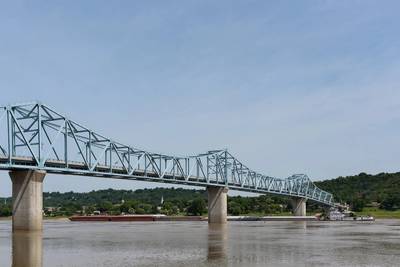COVID-19’s Impacts on American Maritime Infrastructure
It goes without saying that America’s vast network of ports and inland waterways are crucial to the flow of maritime commerce, but these vital parts of U.S. infrastructure also play a big role in driving the greater national economy, support quality of life and ensure public health and safety. Still, no matter how clear and obvious the benefits, U.S. infrastructure as a whole (including roads, energy grids and, yes, ports and waterways among others) has fallen victim to underinvestment. It’s been this way for decades. In 2019, the U.S. spent just 2.5% of its GDP on infrastructure, down from 4.2% in the 1930s, according to the American Society of Civil Engineers (ASCE). From 2016 to 2025, the country will underinvest in its infrastructure by $2 trillion, according to the 2017 ASCE Infrastructure Report Card.
A tumultuous and challenging 2020 fraught with the widespread and enduring effects of the COVID-19 pandemic has made a difficult situation even more so. It’s worth noting that a sizable portion of existing infrastructure systems are supported with user-generated revenue streams. With the onset of the pandemic, commercial water use is down, commuters are staying off the roads and away from transit, and airports are virtually empty. Meanwhile, municipal and state budgets are buckling under unprecedented demands, meaning less support is available for parks, schools and other publicly-owned infrastructure, precisely at the time we should be investing.
ASCE proposes that Congress should make infrastructure investment a centerpiece of its immediate response and long-term economic recovery strategy. “Now is the time to renew, modernize, and invest in our infrastructure to maintain our international competitiveness,” it says.
INLAND WATERWAYS
The U.S.’ 25,000 miles of inland waterways and 239 locks form the freight network’s “water highway.” Most locks and dams on the system are antiquated and in need of maintenance, and nearly half of vessels experience delays as a result of malfunctioning locks and dams. Investment in the waterways system has increased in recent years, but upgrades to the system still will take decades to complete.
The latest impacts:
The inland waterways are especially crucial for the U.S. agricultural industry, which relies on waterways to move wheat, soybeans and other goods to domestic and international markets in a cost-effective manner. Waterways are ideally suited to be part of a COVID-19 related relief package – there are currently 18 projects valued at just over $8 billion that are authorized for construction or currently under construction.
Solutions:
ASCE recommends that Congress provide funding to authorized inland waterway projects through the Energy and Water Development Appropriations Act. Robust funding to repair and replace locks and dams will provide nearly immediate value to the economy and ultimately support the U.S. agricultural sector and other industries that rely on the waterways to get goods to market.
PORTS
Some 926 American ports are responsible for $4.6 trillion in economic activity, or roughly 26% of the U.S. economy. As reported in ASCE’s 2017 Infrastructure Report Card, the movement of goods through ports supports 23.1 million jobs, and provides $321.1 billion in tax revenue to federal, state and local governments.
The latest impacts:
Americans can follow public health officials’ instructions to social distance in no small part due to the continued functioning of our nation’s supply chains. Seaports provide gateways to receive medical equipment, food and other critical goods and services. However, the economic downturn stands to cause significant damage to ports overall volumes, to the tune of an estimated decline of 20 to 30% in total annual receipts. Additionally, tourism at ports has all but ceased.
Solutions:
To stem losses in the maritime industry and the ripple effect those losses have on the rest of the supply chain, ASCE recommends Congress provide $1.5 billion to support operations and capital costs at U.S. seaports. Longer-term, Congress should appropriate $4.5 billion for the Corps of Engineers coastal navigation program and $1 billion in supplemental funding for the Port and Intermodal Improvement Program.














